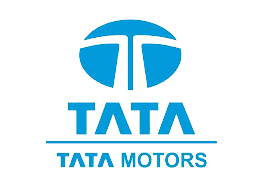Smart Mobile App
Fast, Simple and Easy way to find real-time charging station / charge spot status, reservations, location information and navigation & en-route to the destination of EV driver.
Monitor Charging
Monitor your charging while away from your EV and get update once charging is completed

Finalize Charging Option
Finalize charging option according to your charging connector to charge your EV.







TYPES OF ELECTRIC VEHICLE PLUGS
TYPES 1 J1772
The type 1 plug is a single-phase plug which allows for charging power levels of up to 7.4 kW (230 V, 32 A). The standard is mainly used in car models from the Asian region.
TYPES 2 MENNEKES
The Type 2 connector is equipped with a seven-pin connector allowing for the passage of a 70 A alternating single-phase current, and up to 63 A in three-phase current, with a maximum voltage of 500 V. It thereby delivers a maximum power of 43 kW.
CHADEMO
CHAdeMO is the trade name of a fast charging method for battery electric vehicles delivering up to 62.5 kW by 500 V, 125 A direct current
CCS COMBO TYPE 1
Combo 1 accommodates charging at 200–920 volts DC and up to 350 kW. [1] The combination coupler will also use power-line communication technology to communicate between the vehicle, off-board charger, and smart grid.
CCS COMBO TYPE 2
This is a combination of slow AC and fast DC connector. A versatile socket enabling a faster charge on our Ultracharge units.
GB/T
The GB/T AC standard uses a connector with a pin layout similar to the European Type 2 connector, but are not compatible. It allows mode 2 or mode 3 AC charging at up to 8 or 27.7 kW, with current of 10/16/32A and voltage of 250V, or current of 16/32/64A and voltage of 440V.
SUPERCHARGER
An EV Supercharger is simply a charger that can power up electric vehicles much quicker than a standard charger. Although the likes of Tesla have released their own at-home charging station, the Nema 14-50, it is not quite as fast as a supercharger. With a supercharger, you can swap the hours of waiting for 15 minutes.
Solution
Key Elements of EV Charging Networks

SEVC Multi Port Fast DC 30KW/200KW
- Supports CCS2, CHAdeMO and 22KW AC Type 2 for all type of requirements
- High efficiency of 96% ensuring optimized use of power
- Modular power configuration in increments of 15KW for redundancy and easy serviceability
- Touchscreen user interface and intuitive user experience
- RFID for user authentication and network connectivity for remote management, managing energy costs etc.
- Capable of charging 3 vehicles at a time
- OCPP 1.6J complaint
- IP54 - Designed for indoor or outdoor applications
Features
SEVC GB/T Fast DC 30KW/200KW
- Supports 60kW for 2 x GB/T plugs
- High efficiency of 96% ensuring optimized use of power
- Modular power configuration in increments of 15KW for redundancy and easy serviceability
- Touchscreen user interface and intuitive user experience
- RFID for user authentication and network connectivity for remote management, managing energy costs etc.
- Capable of charging 2 vehicles at a time
- OCPP 1.6J complaint
- IP54 - Designed for indoor or outdoor applications
Features


SEVC Wall DC - 20KW
- Programmable charging mode
- Comprehensive protection
- Multiple communication modes
- 4.3 inch LCD screen
- EU and Jap standard
- Flexible installation
Features
SEVC Fast DC - 60KW
- Programmable charging mode
- Comprehensive protection
- Multiple communication modes
- 7 inch touch screen
- EU and Jap standard
- Dual output ports
Features

Our New Smart Charger are fully compatible with all electric vehicle




















